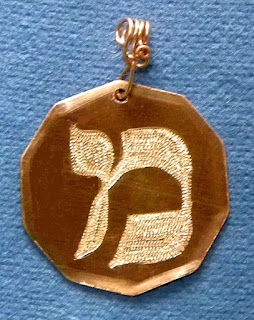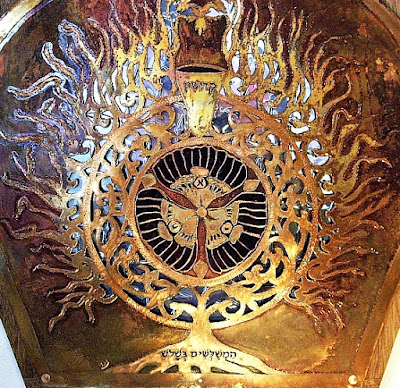 |
| Or Zaruah garden threshold illumination |
We live in a world that ceaselessly seeks to decipher - to take things apart to uncover the secret of their existence; to break the code.
As an artist, I feel drawn into mirror world, the realm of ciphering - to participate in the act of creating a space that holds the secret.
 |
| Aleph ciphered medallion* |
When I think of "cipher" my mind immediately goes to the Hebrew root SAMEcH PEI RESH - the root for words like number, counting and recounting (mispar); telling a story (misapair), book (sefer), library (sifria); the one who writes sacred texts (sofer), sapphire (sapir) and the Spheres of Emanation (s'firot).
 |
| Adrinka ciphered medallion* |
The English word "cipher" sounds suspiciously related to words like sphere and sapphire. It does indeed come to us from the Semitic root, though not directly from Hebrew but from the Arabic of Al-Andalus - the Golden Age of Spain where words like "sifr" and "shayfara" created a whole new concept in mathematics that sparked a revolution of thinking, that of the space holder, the concept of zero. As one philosopher put it:
"Zero does not mean "nothing". Zero is on a border between things identified and not identified. Once the identification is set in, or something is appointed it's name or meaning or characteristic, then one appears."
This mystical mathematical addition gives rise to irrational numbers, with which I identify wholeheartedly!
To participate in the act of ciphering is to reside in the experience of number, story and the sacred space that borders the real and imaginary worlds where intention has an opportunity to lean a wish into a manifestation.
 |
| Mem ciphered medallion* |
*For more information on the ciphered medallions shown here as well as others available you can go to the following Facebook link; Ciphered Medallions . The link to place an order is: Paypal link. You can also just send me an email at moresca.copper@gmail.commoresca.copper@gmail.com



























